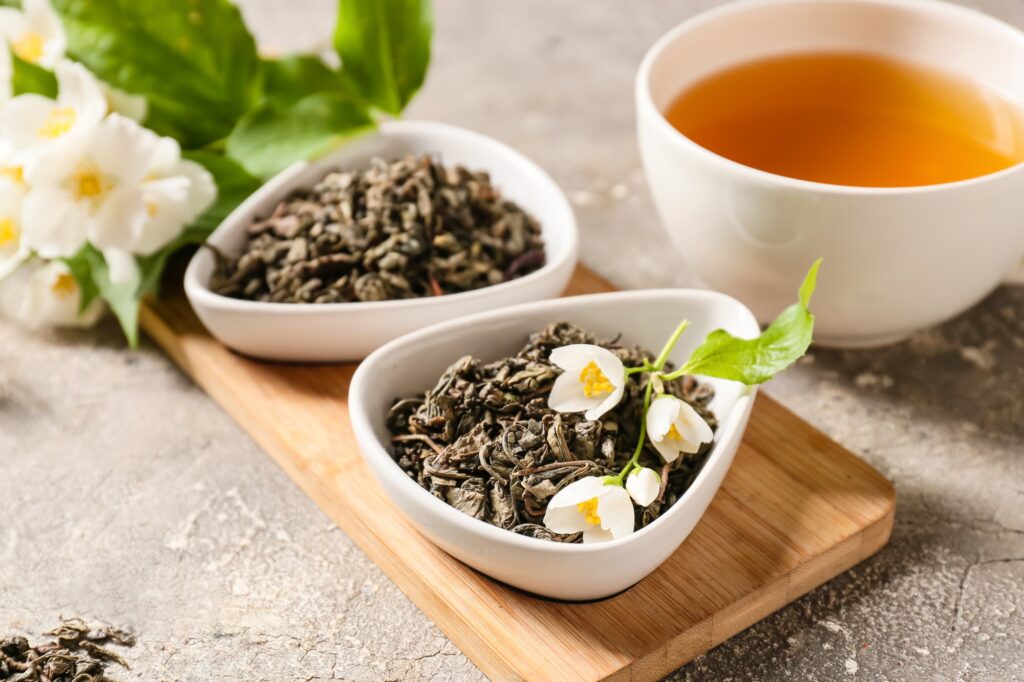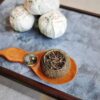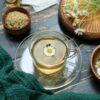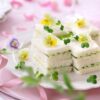
Imagine the delicate aroma of jasmine flowers wafting through the air, mingling with the earthy notes of tea leaves. This is the essence of jasmine tea, a beverage that has captivated tea enthusiasts for centuries. Join us on a journey through the fascinating world of jasmine tea leaves, where we’ll explore its rich history, master the art of brewing, and unravel its complex flavor profile.
A Journey Through Time: The Rich History of Jasmine Tea
The story of jasmine tea begins in the lush landscapes of ancient China, where the art of scenting tea with jasmine flowers first blossomed during the Song Dynasty (960-1279 AD). Legend has it that a tea merchant, inspired by the intoxicating scent of jasmine flowers growing near his tea gardens, decided to blend the two. The result was nothing short of magical.
As time passed, the technique of scenting tea with jasmine flowers spread throughout China, becoming particularly popular in the Fujian province. By the time of the Ming Dynasty (1368-1644 AD), jasmine tea had become a prized commodity, often presented as a tribute to the imperial court.
The Art of Brewing: Perfecting Your Jasmine Tea Experience
Brewing the perfect cup of jasmine tea is an art form that requires patience, precision, and a touch of passion. Here’s how to elevate your jasmine tea experience:
- Water Temperature: The ideal temperature for brewing jasmine tea is between 160°F to 180°F (70°C to 82°C). Water that’s too hot can scald the delicate leaves and release bitter tannins.
- Steeping Time: For loose leaf jasmine tea, steep for 2-3 minutes. For jasmine pearl tea, allow 3-4 minutes. Remember, the longer you steep, the stronger the flavor.
- Leaf-to-Water Ratio: Use about 1 teaspoon of loose leaves or 3-4 pearls per 8 ounces (240 ml) of water.
- Multiple Infusions: Quality jasmine tea leaves can be steeped multiple times. Each infusion reveals a different facet of the tea’s character.
- Serving: Traditionally, jasmine tea is served in small, handleless cups to appreciate its aroma fully. Allow the tea to cool slightly before sipping to experience the full spectrum of flavors.
A Symphony of Flavors: Unraveling the Jasmine Tea Profile
The flavor profile of jasmine tea is a delicate dance between the base tea and the floral notes of jasmine. Here’s what your palate can expect:
- Aroma: The first thing you’ll notice is the sweet, floral scent of jasmine, which can range from subtle to intoxicatingly strong.
- Base Notes: Depending on the tea base (usually green tea, but sometimes white or oolong), you might detect light grassy or vegetal notes, or a slightly nutty flavor.
- Floral Notes: The jasmine flavor should be present but not overpowering. It should complement the tea rather than mask it.
- Aftertaste: A good jasmine tea leaves a lingering sweetness and a clean, refreshing feeling in the mouth.
- Mouthfeel: The tea should feel smooth and light on the palate, never bitter or astringent when brewed correctly.
Sipping a well-crafted jasmine tea is like walking through a moonlit garden. Each sip reveals a new sensory experience, from the initial floral burst to the subtle, lingering sweetness.
Embracing the Jasmine Tea Tradition
As we’ve journeyed through the world of jasmine tea leaves, from its rich history to the intricacies of brewing and tasting, it’s clear why this beverage has captivated tea enthusiasts for centuries. Whether you’re drawn to its storied past, the meditative process of brewing, or its complex flavor profile, jasmine tea offers a unique and enchanting experience with every cup.
So, the next time you brew a pot of jasmine tea, take a moment to appreciate the centuries of tradition in your cup. Let the aroma transport you to distant tea gardens, and savor each sip as a celebration of nature’s delicate balance. After all, in the world of tea, jasmine holds a special place – a timeless blend of floral elegance and earthy wisdom.






